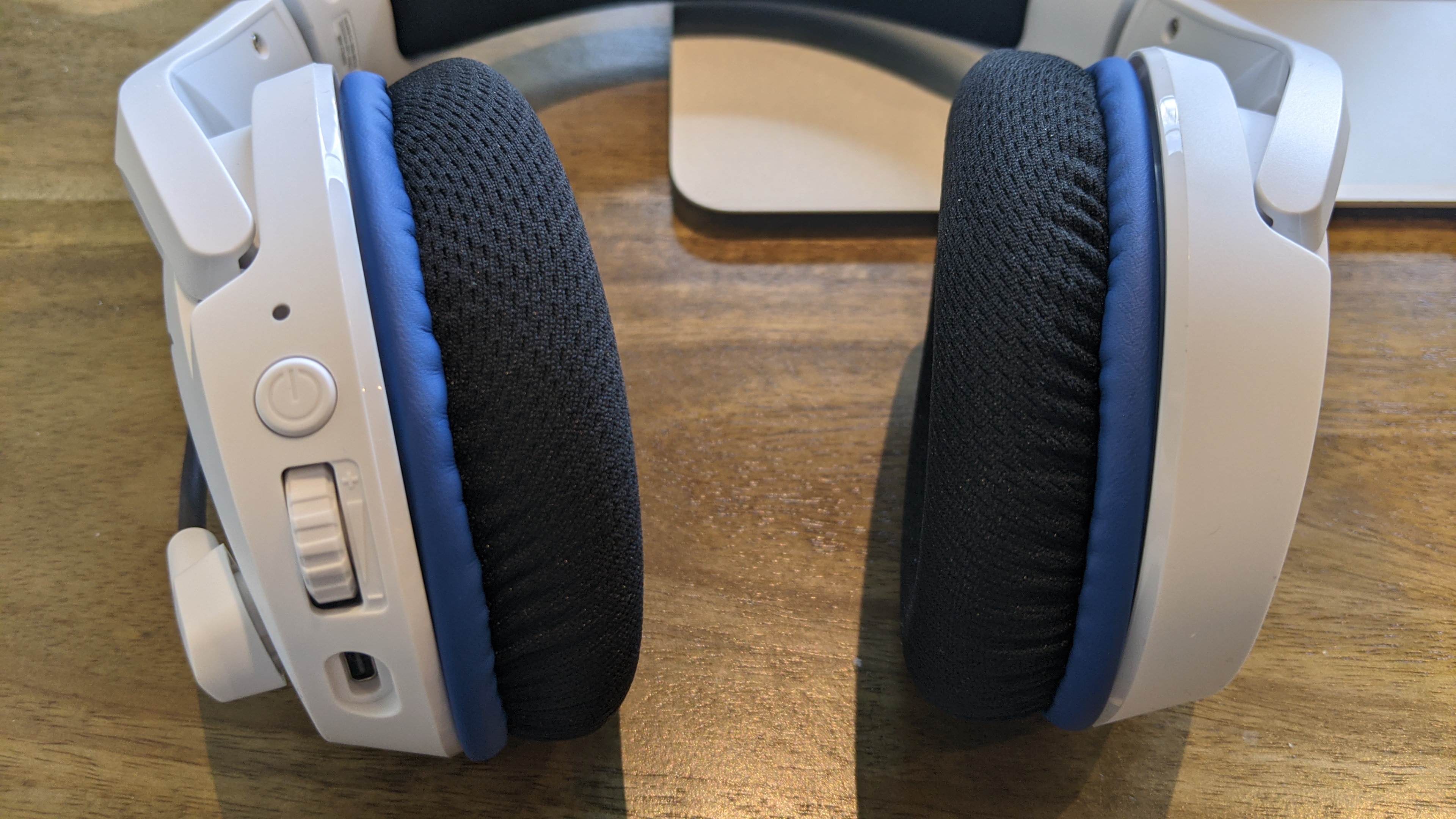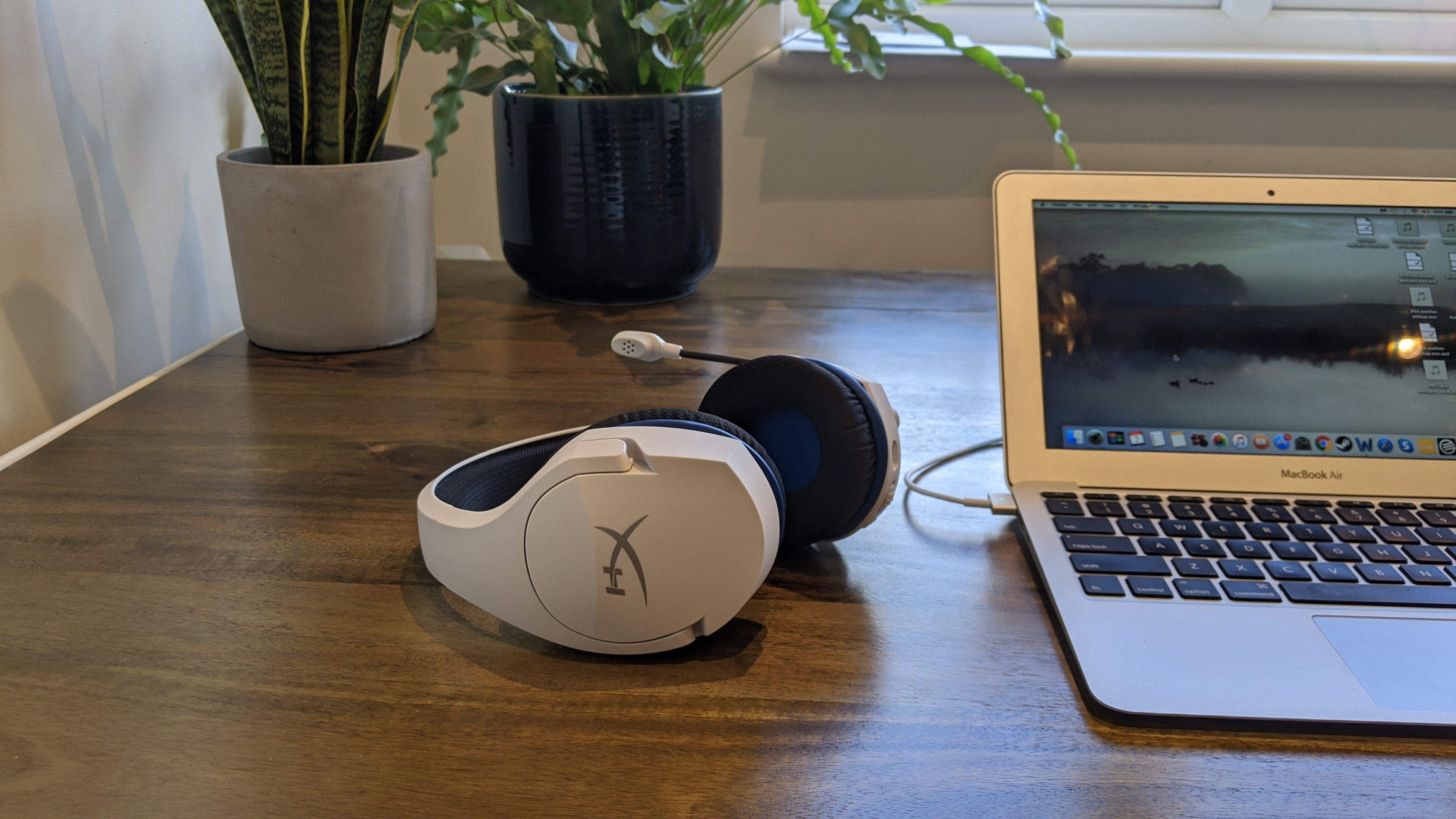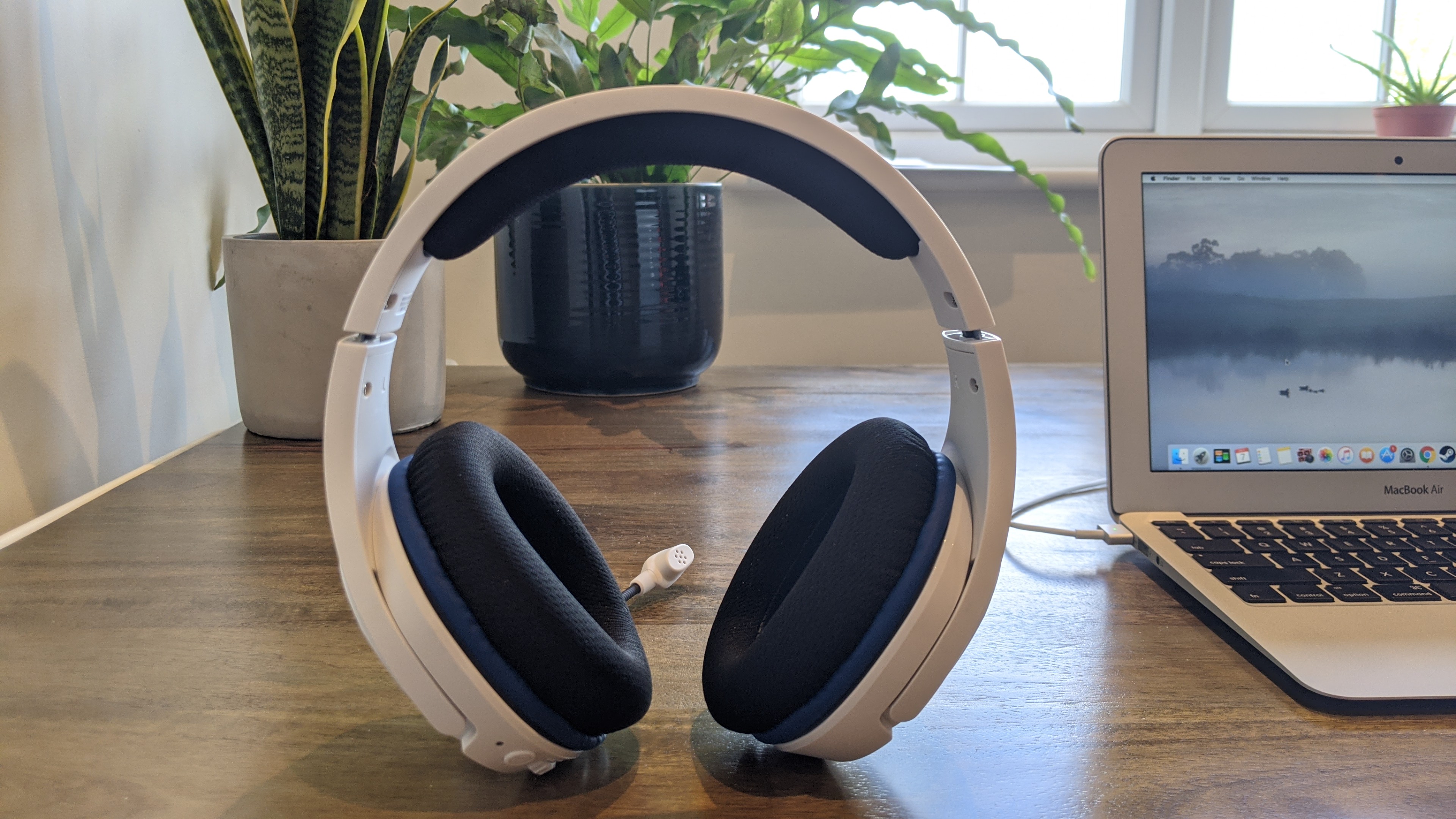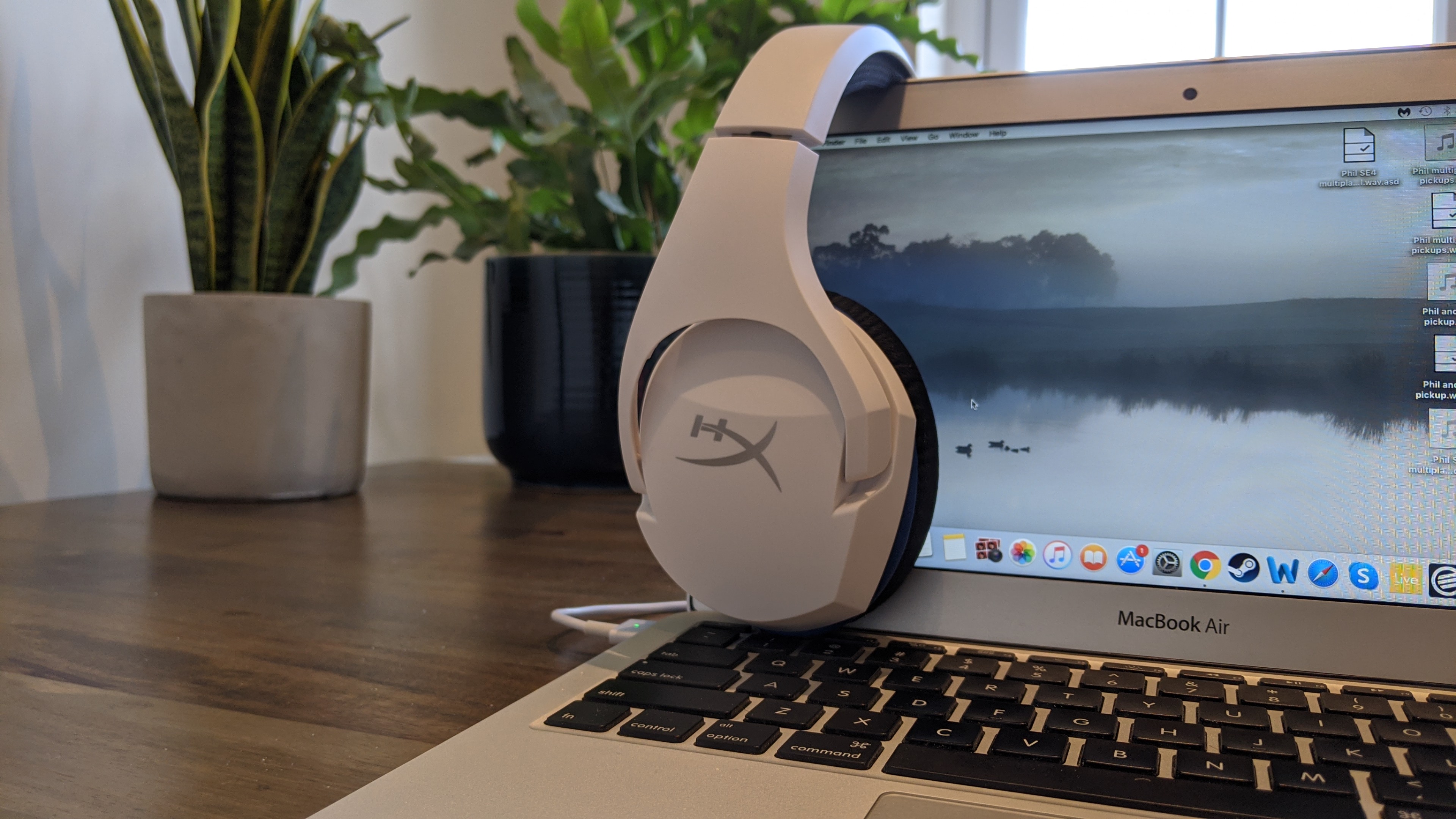TechRadar Verdict
The HyperX Cloud Stinger Core Wireless is an affordable headset with solid battery life, but it's certainly no match for its predecessors.
Pros
- +
17 hours of battery life
- +
USB-C charging
- +
Flexible boom arm
Cons
- -
Feature-light software
- -
Too much clamping force
- -
Feels cheaper than it is
Why you can trust TechRadar
Two- minute review
Kingston’s HyperX division made its name in the headset market thanks to a successful collaboration with Swedish peripherals maker QPAD in back in 2014. QPAD is like the Broken Social Scene of PC gaming gear - you probably haven’t heard of them, but they basically invented everything you like.
The HyperX Cloud took QPAD’s excellent, aviation-inspired QH-90 headset design, turned the bass up a bit, and rightly found rapturous reception. And then the company did it again with the Cloud II. And again with the Cloud Alpha, each time modernizing the overall package while leaving the fundamental sound and comfort intact, because they were close to perfect. Until, of course, HyperX moved away from that model entirely.
And unfortunately, the Cloud Stinger Core Wireless model’s issues boil down to the fact that there’s no discernible DNA from that QH-90 left. Instead of that reassuring hug the Cloud Alpha gave your temples, this headset gives a stiff prod - there’s simply too much clamping force, even with the headband fully extended. There’s also very little rotational movement to each earcup.
This is unashamedly a budget proposition, priced well below $100, and in order to retain a lot of the pricier Cloud Stinger’s core features sacrifices must be made, but comfort shouldn’t be one of them.
Because the quality of that contact around your head has a knock-on effect on the sound. Not to labor the point, but in the earlier Cloud models that snug fit and leatherette cushion cover material gave the frequencies an enclosed space to resonate, and provided great passive noise cancellation.

Instead of the authoritative low-end response and tangible pulse you got around your ears from the first-gen Cloud headsets, this feels imprecise and unimpressive by comparison. Yes, there’s a lot of low-end, but it doesn’t push like it should.
It’s not all bad, though. There’s really useful clarity higher up the EQ range, whether you’re using the 7.1 virtual surround or not. That makes these cans a viable option for anyone who plays shooters with a lot of important positional sound cues. Even though the bass sounds a bit muddy, the overall response is tight enough for an Overwatch session without losing track of characters announcing their imminent specials.
Sign up for breaking news, reviews, opinion, top tech deals, and more.
More positives are to be found when the sound’s going in the other direction. The boom arm has a satisfyingly pliable construction which means it stays just where you place it, and the mic’s fuller than we’d expect at this price range. It’s not detachable, but this isn’t the kind of model you’d want to take to the streets in the first place, so we won’t hold that against it.
Controls couldn’t be much simpler - a power button on the rear-lefthand earcup, with a volume scroll just below it, and a USB-C input below that for charging. The mic mutes after a notched point on its hinge, which is a feature we love in every mic we test, and battery life seems to hold up to the advertised 17 hours. That’s a lot.
Wireless setup is simple and stable too, on both PC and PS4 (it's compatible with both, and PS5). There’s not much to be said about the accompanying software, other than that it doesn’t give you a whole bunch to tweak, but we can live without EQ profiles at this price. It’s annoying having to set your chat mix in Windows sound settings, though.
It’s not a Cloud, or a Cloud II, or a Cloud Alpha, then. It doesn’t look, sound, or feel as good as any of those older, similarly priced, wired headsets. That’s a slightly baffling turn of events, and it means you really need to want the wireless functionality for the Stinger Core Wireless to make any sense for you.

Buy it if...
You’re sick of being on a leash
Plug in the USB receiver, turn on your headset, banish the cables. 17 hours of charge time means this is a pretty good performer.
Your head’s on the smaller side
Seriously. There’s a lot of clamping force here, so if you find your head’s usually too small to fit snugly in gaming headsets, this one’s worth a try.
You like to listen out for clues
The positional audio is pretty precise for the price, and you have the option of 7.1 surround thrown into the mix too.

Don't buy it if...
You liked the Cloud Alpha
It doesn’t compare favorably. But then again, could the Cloud Alpha go wireless or charge via USB? That’s the tradeoff.
You’re an audiophile
Wireless + lower price point + poor fit = some pretty washed out bass and lacklustre Tidal sessions.
- Best PS4 headsets 2020: the top PlayStation 4 gaming headsets

Ad creative by day, wandering mystic of 90s gaming folklore by moonlight, freelance contributor Phil started writing about games during the late Byzantine Empire era. Since then he’s picked up bylines for The Guardian, Rolling Stone, IGN, USA Today, Eurogamer, PC Gamer, VG247, Edge, Gazetta Dello Sport, Computerbild, Rock Paper Shotgun, Official PlayStation Magazine, Official Xbox Magaine, CVG, Games Master, TrustedReviews, Green Man Gaming, and a few others but he doesn’t want to bore you with too many. Won a GMA once.
